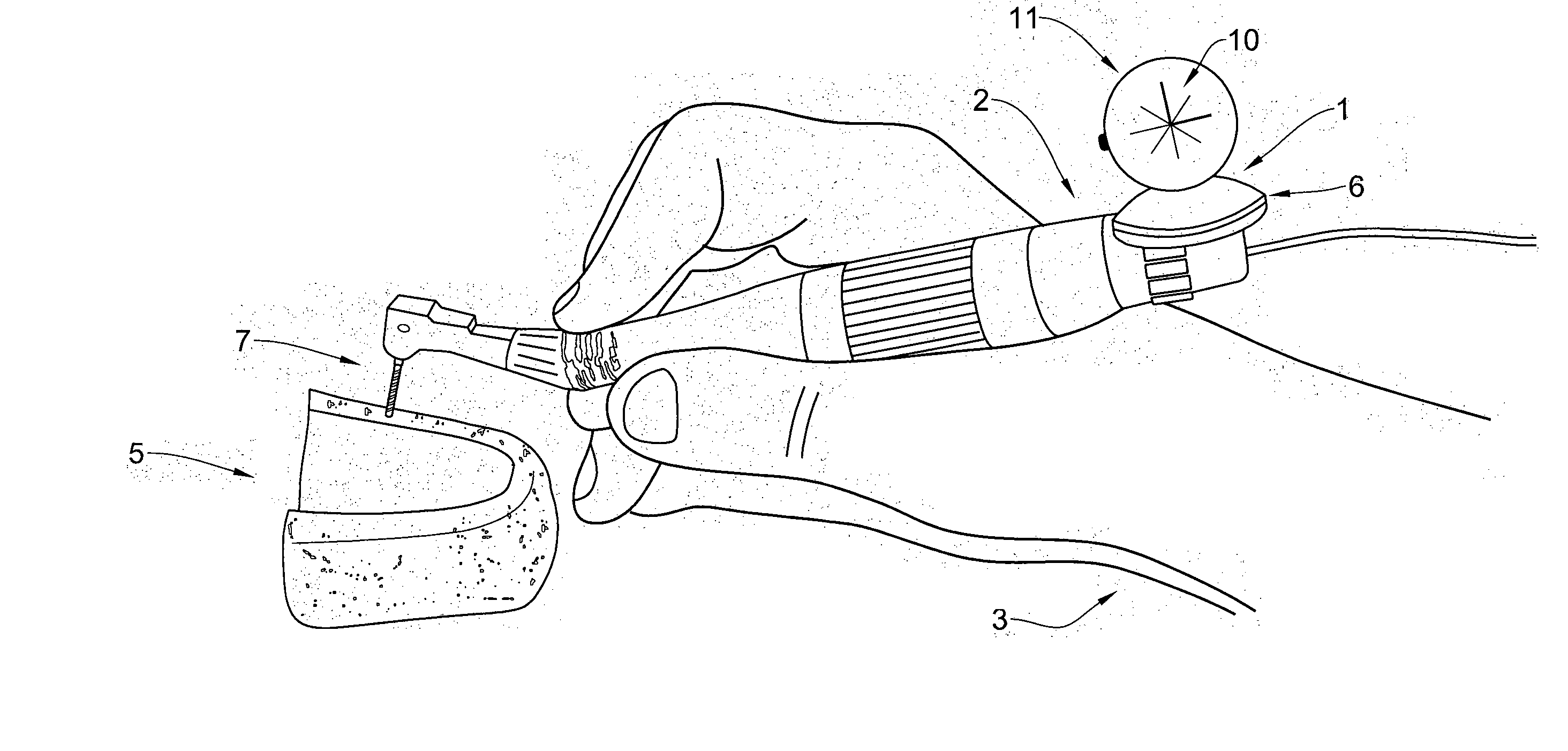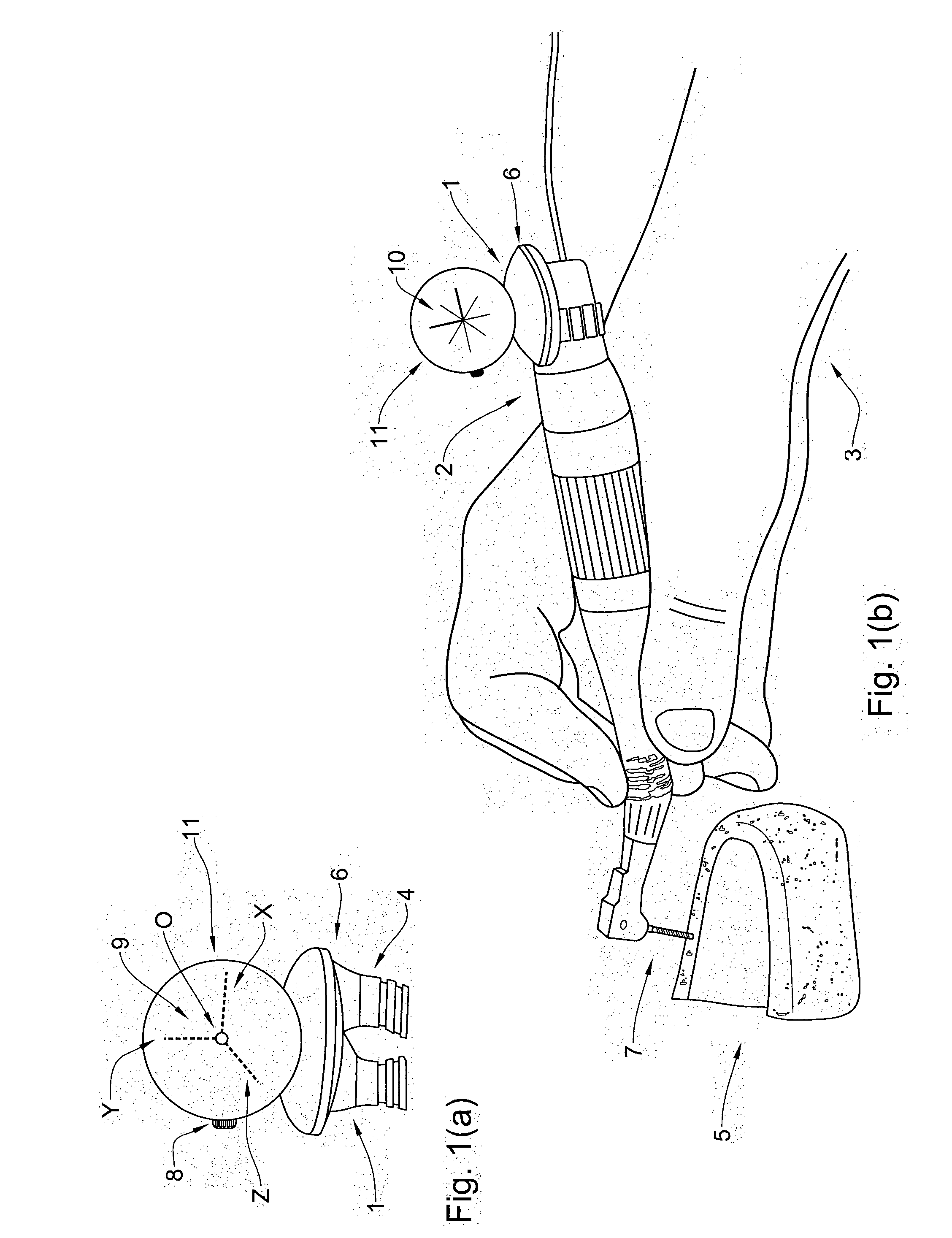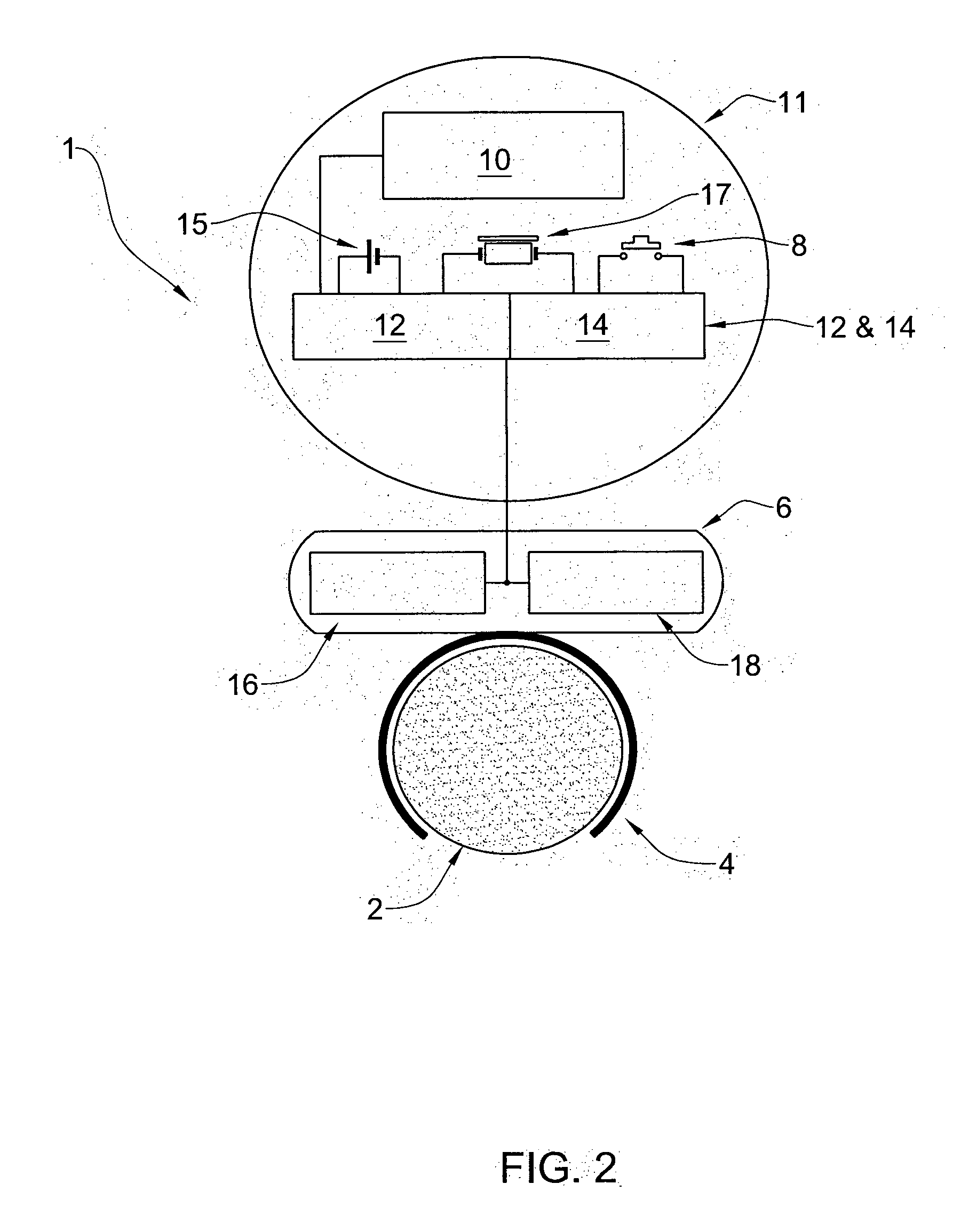Orientation detector for use with a hand-held surgical or dental tool
a technology of orientation detector and hand-held surgical or dental tools, which is applied in the field of medical devices, can solve the problems of reducing the working space available to dentists in the oral cavity and difficult working inside the oral cavity
- Summary
- Abstract
- Description
- Claims
- Application Information
AI Technical Summary
Benefits of technology
Problems solved by technology
Method used
Image
Examples
Embodiment Construction
[0036]In the description below, the invention is exemplified with reference to dental drilling. This is by way of example only, and the invention may be used with any hand-held surgical or dental tool.
[0037]FIG. 1 a shows a device 1 for measuring and indicating the deviation of a hand-held surgical or dental tool from a predetermined orientation in space in accordance with one embodiment of the invention. The device 1 is shown in FIG. 1b firmly attached to a dental handpiece 2. This is by way of example only, and the device of the invention may be used with any surgical or dental tool whose orientation during use must be monitored. The handpiece 2 shown in FIG. 1b is grasped by a user's hand 3 while drilling with drill bit 7 into an alveolar ridge 5. The device 1 is attached to the handpiece 2 by means of a spring clamp 4, preferably at a location on the drill that does not enter the oral cavity during drilling. The device 1 comprises a base part 6 containing orientation sensors, as...
PUM
 Login to View More
Login to View More Abstract
Description
Claims
Application Information
 Login to View More
Login to View More - R&D
- Intellectual Property
- Life Sciences
- Materials
- Tech Scout
- Unparalleled Data Quality
- Higher Quality Content
- 60% Fewer Hallucinations
Browse by: Latest US Patents, China's latest patents, Technical Efficacy Thesaurus, Application Domain, Technology Topic, Popular Technical Reports.
© 2025 PatSnap. All rights reserved.Legal|Privacy policy|Modern Slavery Act Transparency Statement|Sitemap|About US| Contact US: help@patsnap.com



